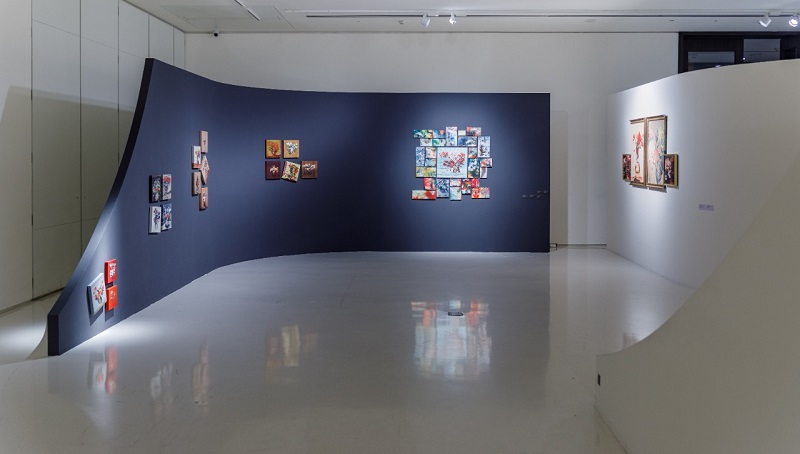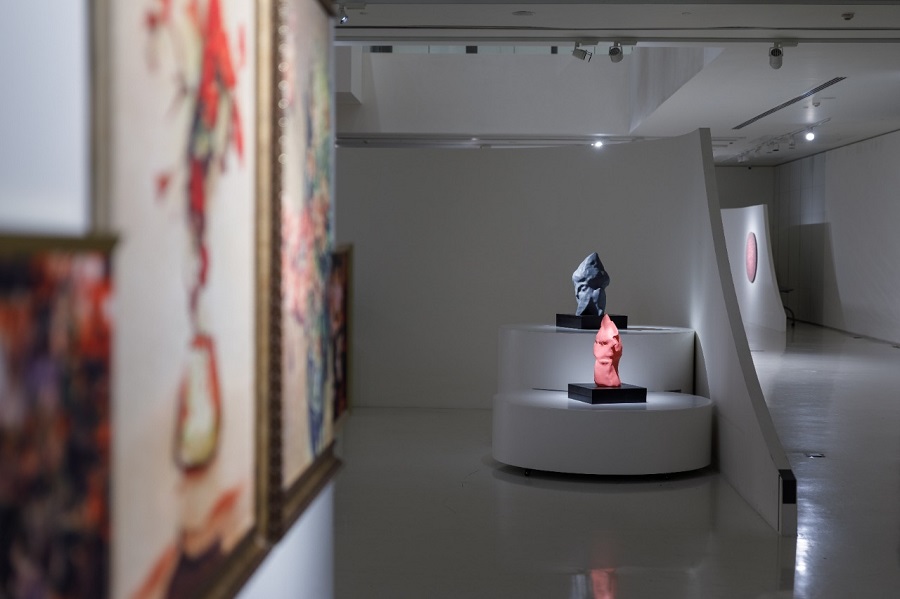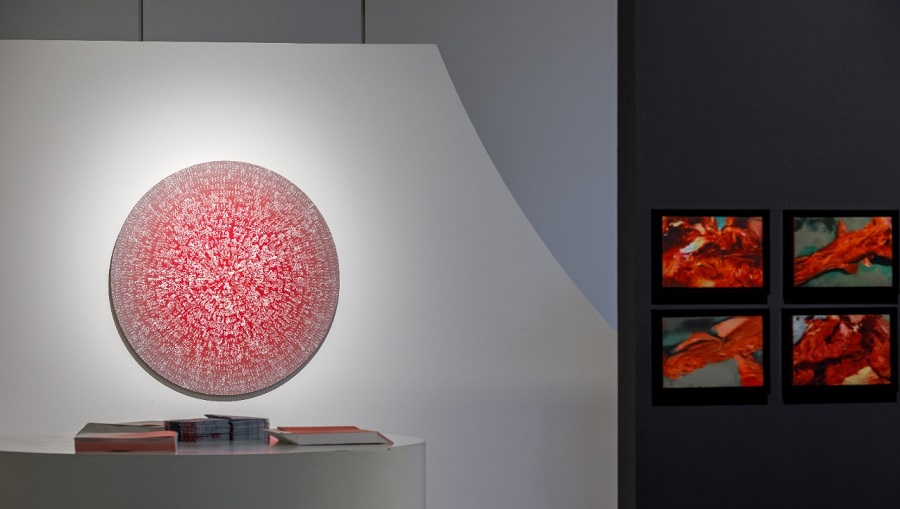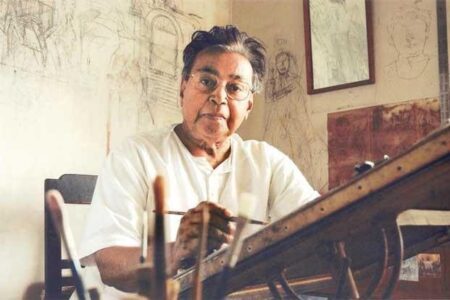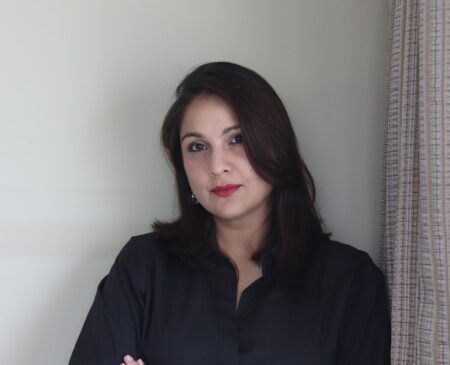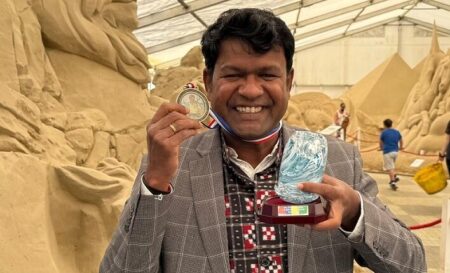EXO-Stential – AI Musings on the Posthuman, claimed to be India’s first solo exhibition of AI art, is on at the Emami Art Gallery in Kolkata. The exhibition has been put together by art curator Myna Mukherjee in collaboration with 64/1 – an art collective founded by brothers Karthik Kalyanaraman and Raghava K.K. and is backed by Engendered, trans-national arts and human rights organisation. Mukherjee, also the founder of EnGendered, gives us a lowdown on what AI (Artificial Intelligence) art is, its past and its future.

What is AI art in layman’s terms?
AI art is any artwork that is created using AI as a tool of assistance. It includes works created autonomously by AI systems and works that are a collaboration between a human and an AI system.
The artist does not provide it with any rule or principle, for instance of composition or colour balance. Instead, the AI algorithm, which is called a neural network, is first trained using a large number of curated artworks (called the training set). The algorithm is then allowed to draw its own conclusions about the common formal principles underlying the training set. After this ‘training’ the AI is ready to start creating the artwork.
The human artist has to carefully choose what kind of images the AI is exposed to in this training process and also has to monitor the learning process to make sure it doesn’t overgeneralize or produce work too close to the examples it has seen. All this is done with a more traditional artistic eye on the quality of the work the AI creates. In other words, we have here the combination of the practices of a traditional artist, a computer programmer, a statistician and a data engineer.
How has the evolution of the art form been like?
Today’s AI art is just emerging; a very young field, still in its childhood. Perhaps the first wave of interest in images produced by modern AI was in mid-2015 with the Google DeepDream project. However while it sparked some interest in the art community, it did not quite create an art genre. Based on the uncanny ability of machines for pareidolia, to find patterns (where we might see none), the project created very strange psychedelic images. But they all looked the same. Another crucial element in the rise of AI art was the democratisation of access to large datasets of images. Some of the early pioneers who started working right away with it were artists like Mario Klingemann and Memo Akten. The first Indian exhibition of AI art at a contemporary gallery happened in 2018 at Nature Morte in New Delhi, curated by 64/1.
Is it true that these datasets available for AI are predominantly western?
Yes. Only 10 companies work with the largest datasets and none of them are South Asian. They are predominantly western though there are a few from China.
Despite much original contribution by and impressive work from the Global South, most of the visibility of AI art is quite obviously focused on artists from the West. This is why showcasing the evolving work of a non-Western trailblazer in this field, at this moment when the field is defining itself, is an important art-historical endeavour.
Could you tell us about the show?
EXO-Stential – AI Musings on the Posthuman, offers a deep dive and contemplation of this emergent ontology of whether AI art is the future of contemporary art, whether it blurs the definition of the ‘artist’ and more.
Harshit Agrawal’s work with AI has always engaged with contemplations of social, cultural and ethical issues, with his unique ability to work with large amounts of data to explore internal biases at an individual and societal level. In the interactive video Masked Reality, for example, where the viewer’s facial expressions are transformed into those of a (female) Kathakali performer juxtaposed simultaneously with that of a (male) Theyyam ritual participant, Agrawal has worked with two different AI algorithms. The first algorithm learns to break down the structure of any video image of a face that it sees into the basic facial structure, and the second learns to add the appropriate face paint to that basic structure to transform it into the face of a Kathakali performer or a Theyyam medium.
How many AI artists do we have in India? Can only those with a technology background create such works?
The ones I know of are 64/1 (brothers Raghava K.K and Karthik Kalyanaraman), Harshit Agarwal and Sahej Rahal. Two other artists did a collaborative AI work called Auria Kath’ (something that generates AI visuals from AI written Haikus). Their names are Fabin Rasheed and Sleeba Paul.
Over the years it has gotten much easier to start working in AI art with online tools so the barriers are becoming lower. But yes, a tech background is still generally the norm.
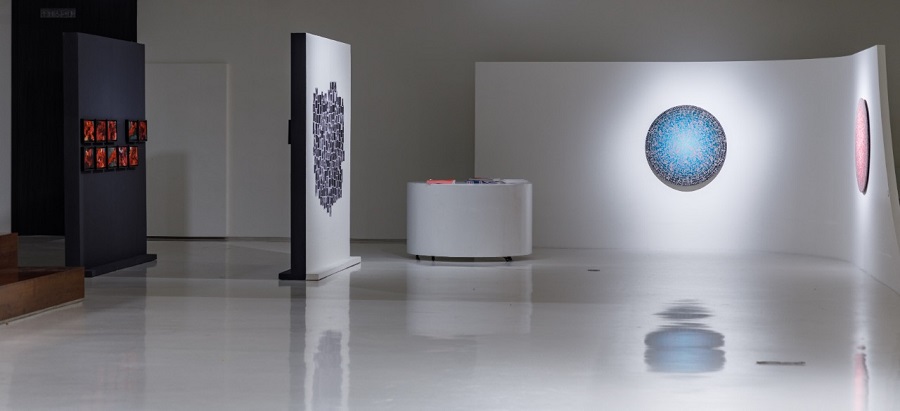
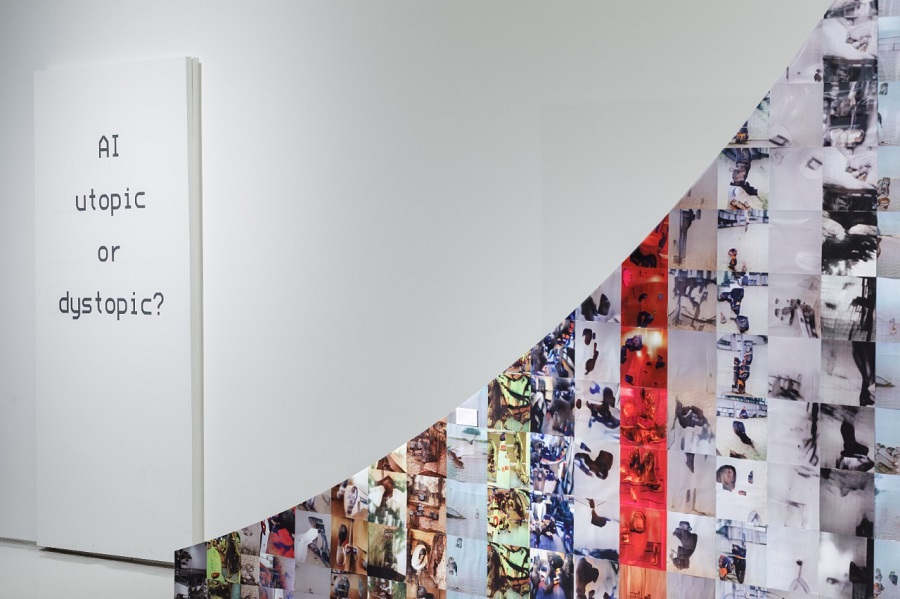
Whose skills do we rate at the end? Those of the human artist or that of technology of the technology?
Of course, those of the human artist who conceives and executes the project and might even modify standard algorithms to fit their work. The training is not a mechanical process at all.
However, the still commonly cherished notion of ‘genius’ of the artist (which so much of 20th century Art has tried to combat), is also put in question. There are several creative agents at work here: many individuals might have created the elements in the training set, the AI algorithm was conceived by computer scientists and statisticians, implemented by big tech companies like Google and Facebook, and then there is the work of the machine.
After all, we do have to ask ourselves: is traditional art really created by sole geniuses in the desert?
What is the future of AI art? Will we be unable to distinguish between art by a human and a computer at some point in time?
According to earlier surveys and studies, most people can’t distinguish between AI and human art. But those surveys included the general public, not curators or artists. The novelty value of “being created by AI” is no longer a sufficient reason to exhibit a work of art today. AI art practice has deepened conceptually and diversified in practice. A new form of life is emerging. We are building a God, something that transcends humankind. Artificial Intelligence is rapidly reshaping the world. It’s going to be everywhere all the time.


